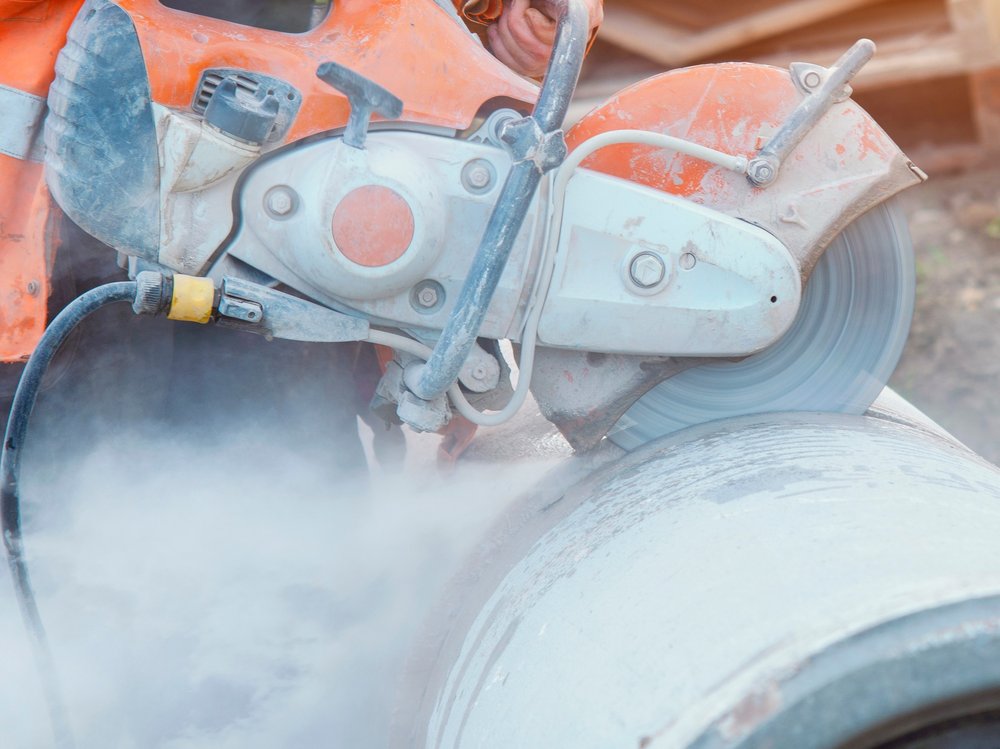
Dust
Workers in construction are 20 times more likely to die of exposure to harmful airborne substances than from a workplace accident.
Overview
Workers in construction are 20 times more likely to die of exposure to harmful airborne substances than from a workplace accident. Construction workers who smoke are at even greater risk.
Every year, an estimated 600-900 people die in New Zealand from work-related health issues and a further 5,000-6,000 people in New Zealand are hospitalised after being exposed to airborne contaminants at work, including wood dust and silica.
Under the Health and Safety at Work Act, employers have a responsibility, as far as is reasonably practicable, to keep their workers not only safe but healthy as well. And this means thinking about how risks like dust can be eliminated, isolated or managed.
What is dust?
Dust is tiny, dry particles in the air. This means many work activities can create dust. The dust that can’t be seen is the dust that can cause the most harm. Breathing in dust can have both acute and chronic effects, potentially causing long-term health issues for builders.
Dust is generated by:
- Cutting, sanding, grinding sweeping, and polishing operations.
- Old lead pipes (lead oxide dust).
- Stripping out fibrous insulation, lagging or packing materials (potentially asbestos).
- Being on a dry and exposed work site.
- Wind and heat.
In dry weather, the circulation of dust in the air increases.
Take sand, for example. It can be fatal when breathed into your lungs over time, and if sand is your building material, on a windy day your product is literally flying away.
Silica dust
Exposure to silica dust (a major component of beach sand and granite) can cause silicosis, chronic obstructive pulmonary disease or lung cancer. Silica can be found in cement concrete, bricks, rocks, stone, sand and clay.
Breathing in silica dust can cause lung tissue to scar, a condition referred to as silicosis. This scarring results in a loss of lung function. The effects of silicosis are permanent and may continue to develop even after exposure has stopped. Once silicosis has developed, there can be an increased risk of kidney disease and tuberculosis.
Testing for silicosis is difficult so prevention for yourself and others is important. Symptoms to watch out for include:
- Frequent dry coughing.
- Shortness of breath.
- Wheezing.
- Increased tiredness.
Reducing the health risks associated with dust
Water
- Continuous water and wet working methods can keep dust out of the air, and out of your lungs.
- Spray surfaces with water or covers (especially piles of sand or gravel outdoors).
- Make sure you have enough water available for the whole job.
- Clean equipment and work areas frequently with a water hose; don’t dry sweep.
- Remember that dust silt can’t go down the drain. It needs to be collected and then disposed of.
Extraction methods
- On-tool extraction, which is a type of local exhaust ventilation (LEV) system fitted directly onto the tool.
- Local Exhaust Ventilation (LEV). For example, industrial vacuums used at places of work that cut, grind and polish stone.
- Remember to be aware of where the dust is going because it may affect other workers and the public.
Personal Protective Equipment (PPE)
- Wear PPE suitable for the task such as respiratory protection, hearing protection, overalls, jacket, gloves, hard hat and eye protection, and follow the material safety data sheet (MSDS).
- Seek professional advice about the right type of respiratory protection Personal Protective Equipment
Hygeine
- Wash face and hands immediately after finishing tasks and before eating, drinking or smoking.
- Wash contaminated work gear, clothing and boots on site if possible.
- It is a good idea to wash dusty clothes separately.
Other methods
Other steps you should consider to reduce the health risks associated with dust are air monitoring, health monitoring, training and warning signs.
Site Safe offers a four-hour Passport renewal course introducing the topic of worker health, which includes dust.
Further resources
- Asbestos [Guide]
- Asbestos [Toolbox Talk]
- Cement [Guide]
- Housekeeping [Guide]
- Housekeeping [Toolbox Talk]
- Personal Protective Equipment [Guide}
- Respiratory Protective Equipment (RPE) [Guide]